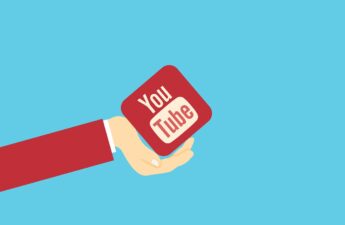![]()
High-definition television transmission was once referred to as “digital.” Traditional marketing relies on conventional media, and advertising type we currently refer to as “digital” appears to be of no interest to advertisers.
Let’s fast forward twenty years. According to the survey, a large number of individuals use Google every day all around the world. As a result, any company’s goal shifts to maintaining a high search ranking. Search engines largely influence digital advertisement positioning, and current business statistics on social media advertising demonstrate the success of digital advertising.
Other article you might like: 5 Digital Marketing Approaches to Expand Your Service
Exploring the Difference Between Digital Marketing and Traditional Marketing
Despite its widespread adoption and expansion, many firms continue to use the old-fashioned advertising technique. The concept of digitization is often difficult to grasp. They’re still using antiquated marketing strategies. On the other hand, traditional commercials are something that many of us have grown up with and are familiar with. It’s worked for you before, it’s measurable, and it’s comfy. So, as a result of this essay, you will all be able to determine which method of marketing is the most effective.
Whether to choose digital marketing or traditional marketing, many firms are trying to work out by themselves. It is wiser to choose the professional digital marketing agency to excel and earn higher ROI.
What Exactly is Digital Marketing?
Digital marketing comprises all forms of online marketing, such as sponsored social media advertising, email campaigns, and pay-per-click (PPC) advertising. We can define digital marketing as using digital channels such as web pages and social media platforms for marketing interaction. According to an Emarsys analysis, about 3.2 bill people use social media mediums regularly, which helps to explain the current rise in ad placement on these websites. Digital marketing helped organizations reach out to their customers and keep visibility in times like Covid when companies struggled to survive and remain relevant despite being fully distant.
Advantages and Disadvantages of Digital Marketing
Advantages:
- Tracking the results of your efforts and gaining insights into your marketing strategies is straightforward.
- There are more options for engaging the audience—surveys, sweepstakes, referral codes, and so on.
- Using numerous analytical techniques makes gathering customer information easier.
Disadvantages
- It is continuously changing, and each channel, from social media to search engine marketing, requires its own expert to obtain the most return on your investment.
- Because digital marketing depends on technology, which might malfunction at any time, a technology breakdown is possible.
- A great deal of human intervention is required.
Types of Digital Marketing Services
- Websites
- Email Marketing (engages 82% of users)
- Search Engine Optimization (SEO)
- Affiliate marketing
- Social Media (used by about 42% of users)
Traditional Marketing
Traditional marketing refers to any sort of advertising that isn’t done online. This type of marketing, which may be seen in everything from newspapers to radio stations, allows advertisers to reach out to specific consumers. Printing, radio, direct mail, phone calls, and even outdoor advertising such as banners are all examples of this. Conventional marketing is one of the most well-known and researched marketing approaches. Advertisers choose this method because it has been shown to be effective. Traditional marketing is something that everyone regularly encounters, whether in the mail or the newspaper.
Traditional Marketing’s Advantages & Disadvantages
Advantages:
- More endurance, as experiencing something in the real world rather than on a smartphone, enhances the chances of remembering it.
- Promotional printed materials, for example, are simple to retain. Traditional advertising materials such as leaflets, posters, booklets, and brochures can be conserved and reused.
- They are as attractive, captivating, and regular occurrences in people’s daily lives as they are insightful and simple to comprehend.
Disadvantages
- Frequently expensive. If you’re a new company, you probably won’t be able to afford a four-page ad in a magazine.
- You can’t undo what’s already been done, such as mixing up discounted products when filming a radio commercial or printing the wrong price on flyers.
Types of Traditional Marketing
- Posters
- Television
- Flyers
- Newspapers are printed on a daily basis (followed by about 56% of people)
- Messages on the radio
- Billboards are a type of advertisement (followed by about 77% of people)
- Magazines
Traditional Marketing Vs. Digital Marketing in The Post-Pandemic World?
Traditional marketing ways have shown to be effective for small firms seeking to reach only local customers. Businesses targeting the pre-Gen Z population still prefer it because of its convenience and credibility. On the other hand, the epidemic has expanded the growth of digital marketing and made it an important component of all types of firms.
You can also connect with more target audiences through digital marketing platforms than you can in person. Since the pandemic has trapped the globe inside four walls, smartphones and the internet have kept everyone connected, and you may swiftly reach people who need your services. Campaigns on social media are also inexpensive than traditional marketing. Furthermore, tracking your brand’s reach and connection with its audience is now easier than ever. If you want to invest in your online SMM efforts, now is the time. According to VisaVisa, social media platforms account for 25% of all internet-based shopping.
When it comes to digital marketing services, small businesses have a distinct advantage. They can compete successfully in their local markets with global brands by employing powerful demographic-based marketing methods and personalizing their approach. Overall, digital-based marketing is more appropriate in today’s society and offers a number of advantages over traditional marketing.
Conclusion
Finally, both marketing strategies have pros and disadvantages; the key is to understand your specific marketing needs, financial limits, and target demographic. However, according to the current trends, the digital industry is undoubtedly paving the way for more engagement and revenue development.




